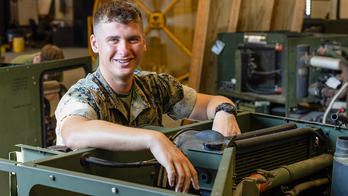Idalia extends its destruction along the southeastern U.S. coastline
Tropical storm Idalia battered the southeastern U.S. coastline late Wednesday night after slamming into Florida earlier in the day as a major hurricane and rolling through parts of Georgia and South Carolina.
The National Hurricane Center said a storm surge warning was in effect from the Savannah River northward to the South Santee River in South Carolina. Idalia was about 15 miles north-northwest of Charleston, S.C. and packing winds of up to 60 mph, the center said.
The storm initially slammed into Florida's Gulf Coast at about 7:45 a.m. as a Category 3 hurricane with 125 mph winds — tied as the strongest to hit the Big Bend area of the Big Bend region of the state. Idalia remained a hurricane as it tore into Georgia with winds at 90 mph. It eventually slowed and was downgraded to a tropical storm as it reached South Carolina.
Idalia still remained a serious threat late Wednesday night. Forecasters cautioned the "risk of freshwater flooding, storm surge and strong winds continues across portions of Georgia and the Carolinas."
"On the forecast track, the center of Idalia will move near or along the coasts of Georgia and South Carolina through tonight, and then just offshore the coast of North Carolina on Thursday," the NHC said.
Residents of the Carolinas have also been warned of potential tornadoes in the region.
Throughout Wednesday, heavy rains and gusty winds and rains lashed the region, leaving hundreds of businesses and entire neighborhoods submerged in water. Hundreds of thousands of people have also gone without electricity for much of the day. Nearly 150,000 customers were without power in the state of Florida late Wednesday, while slightly more than 130,000 were out in many of Georgia's southern counties, according to PowerOutage.us.
In northern Florida, primary roads became impassable with downed power lines and split trees strewn across traffic lanes. In South Carolina, the National Weather Service reported "major coastal inundation," including in downtown Charleston where water had broken through the historic seawall, the Charleston battery.
It is unclear how many lives have been claimed by the fierce storm. At least one person was killed in Georgia, according to The Associated Press. Meanwhile, Florida Highway Patrol officials said two men were killed in separate rain-related crashes hours before Idalia struck the state.
During a Wednesday evening news conference, Florida Gov. Ron DeSantis said, "There is currently one unconfirmed fatality that the Florida Department of Law Enforcement is vetting. This was a fatality involving a traffic incident that is being looked at."
He did not explain if the fatality was one of the two reported earlier in the day.
Search and rescue efforts
Across the three impacted states, rescuers have been pulling hundreds of stranded people from flooded homes and vehicles.
Kevin Gurthrie, director of the Florida Division of Emergency Management, said that by Wednesday evening there were no outstanding missing person reports.
The agency has completed 75% of its primary search for people and are not finding them in their homes, signaling many residents chose to evacuate, Guthrie said.
Several authorities have been dispatched across the state, including Florida Urban Search and Rescue, the Florida National Guard, the U.S. Coast Guard, the Florida State Guard, and the Florida Fish and Wildlife Conservation Commission.
Residents warned not to let their guard down
Georgia Gov. Brian Kemp said he's marshaling a full-scale emergency response as Idalia sweeps across the state.
Speaking from the Georgia Emergency Operations Center in Atlanta early Wednesday, Kemp warned residents to stay prepared, even after the storm weakened.
"It does not mean that there won't be trees coming down late this afternoon, early this evening in places like Savannah, power lines coming down. Still a very dangerous situation people need to prepare for as this storm moves through the state," Kemp said.
Southern Georgia appears to have suffered the most severely from Idalia's destructive path. Savannah Mayor Van Johnson urged people to stay safe.
"Be safe, be smart, stay home!" he posted on X, the platform formally known as Twitter.
The city established a 12-hour curfew from 6 p.m. Wednesday night through 6 a.m. Thursday morning.
Similarly, authorities in Madison County— one of the hardest-hit in Florida — ordered a curfew from 8 p.m. until 8 a.m. on Thursday.
Due to the "broadness and extensive damage of our hurricane event county wide, and for safety and security of our citizens and first responders, the curfew will remain in effect until further notice and evaluated daily for continued need," Sheriff David Harper wrote on Facebook.
Disclaimer: The copyright of this article belongs to the original author. Reposting this article is solely for the purpose of information dissemination and does not constitute any investment advice. If there is any infringement, please contact us immediately. We will make corrections or deletions as necessary. Thank you.







